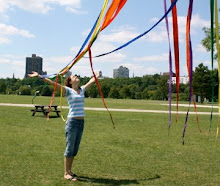In many ways, it feels like I've landed right back in the midst of my old life, like I'm picking up exactly where I left off. I live about 3 blocks from my last domicile, in a beautiful, gloriously affordable, and uncannily quiet apartment with two wonderful roommates (added bonus: we seem to be the only tenants not in some way affiliated with the Manhattan School of Music, which means that we are near constantly serenaded). My apartment is, geographically, in the same area I lived in before but, as it is south of 125th St, technically in Morningside Heights instead of West Harlem. The difference in vibe is actually pretty shocking. Despite rapid gentrification and Manhattan's inherent predilection for urban blending, 125th St really is a dividing line of sorts. It was less obvious to me when I lived north of 125th - whether because of my racial identity, because of how Manhattan is laid out, or simply because I was new to New York, I'm not sure. But now that I live south of the divide, I see through different eyes. In terms of day-to-day errands, there's little need for us southerners to go too far into Harlem; it generally makes more sense to go south. Harlem is less feared than it is unknown.
I hardly claim to be an expert on Manhattan human geography, but the demographic shift is clear. Go just south of 125th and you're in the land of university superabundance. As our building demonstrates, nearly everyone is associated with one of the academic institutions and the stores, restaurants, and lifestyle clearly reflect that truth. Go just north of 125th and you're in the land of lower-middle class, working, largely black (though increasingly Hispanic) families. Bodegas. Storefront churches. Projects. The physical transition and the wealth disparity are far more gradual, far less jarring than they were in New Haven, but they are still quite noticeable. My curiosity has definitely been piqued.
But what really piques my curiosity when it comes to cultural, micro-sociological, and - increasingly - racial dynamics is not my own neighborhood, but a strange and foreign land commonly known as the Upper East Side. This land that MTA forgot when creating the public transit system is not one I ever had the need or desire to frequent because, perhaps more than any other Manhattan neighborhood, the UES staggers under the weight of its acquired stigma: wealth. And so, due to the combined force of its lack of accessibility and its reputation for having a stick up its ass, the UES has managed to remain a strangely isolated enclave of wealthy New Yorkers with raging superiority complexes. It's like urban suburbia. The schools are better. The parks are nicer. The grocery stores stock more organic food. You cannot walk 6 inches without tripping over a stroller, as well-to-do families flock to the East 80s to raise their young at a safe distance from the city's less desirable characters. It is really not, in any way, New York City as I have ever experienced it. And now I work there. As a nanny.
Please believe me when I say that being a nanny on the UES entails equivalent culture shock to being a chaplain in Port Newark. After two immersive service years whose focus was, in brief, being in solidarity with the poor, to suddenly find myself amidst people who say things like, "I'm just so upset, the St. Regis didn't have the Bentley available to take us to the Bronx Zoo; the children were devastated," is, to put it mildly, a bit disorienting. At times frustrating. And unfailingly fascinating. Because, as a white, college-educated, young woman, I fit the demographic of the UES more closely than I fit that of West Harlem. And yet, I function in what should be my cultural milieu as a member of the servant class. That a white baby should have a white nanny seems to mess with everyone's heads (except, I presume and hope, the baby's): parents who assume he's mine; nannies who assume I'm just another crazy, condescending white mom; children I meet in the park who treat me differently than they do the other nannies. It is most certainly messing with my own head, bringing to light all manner of racist and classist assumptions I had no idea I had.
And so, dear readers, there's a long-winded taste of what you're in for, should this actually work out: rambly musings on urban geography, a foray into the racial dynamics (a subject which, it should be clearly stated, I know next to nothing about) of the nannying world, and, of course, the inevitable absurd stories one can acquire simply by walking around this city.
It is so good to be back.








